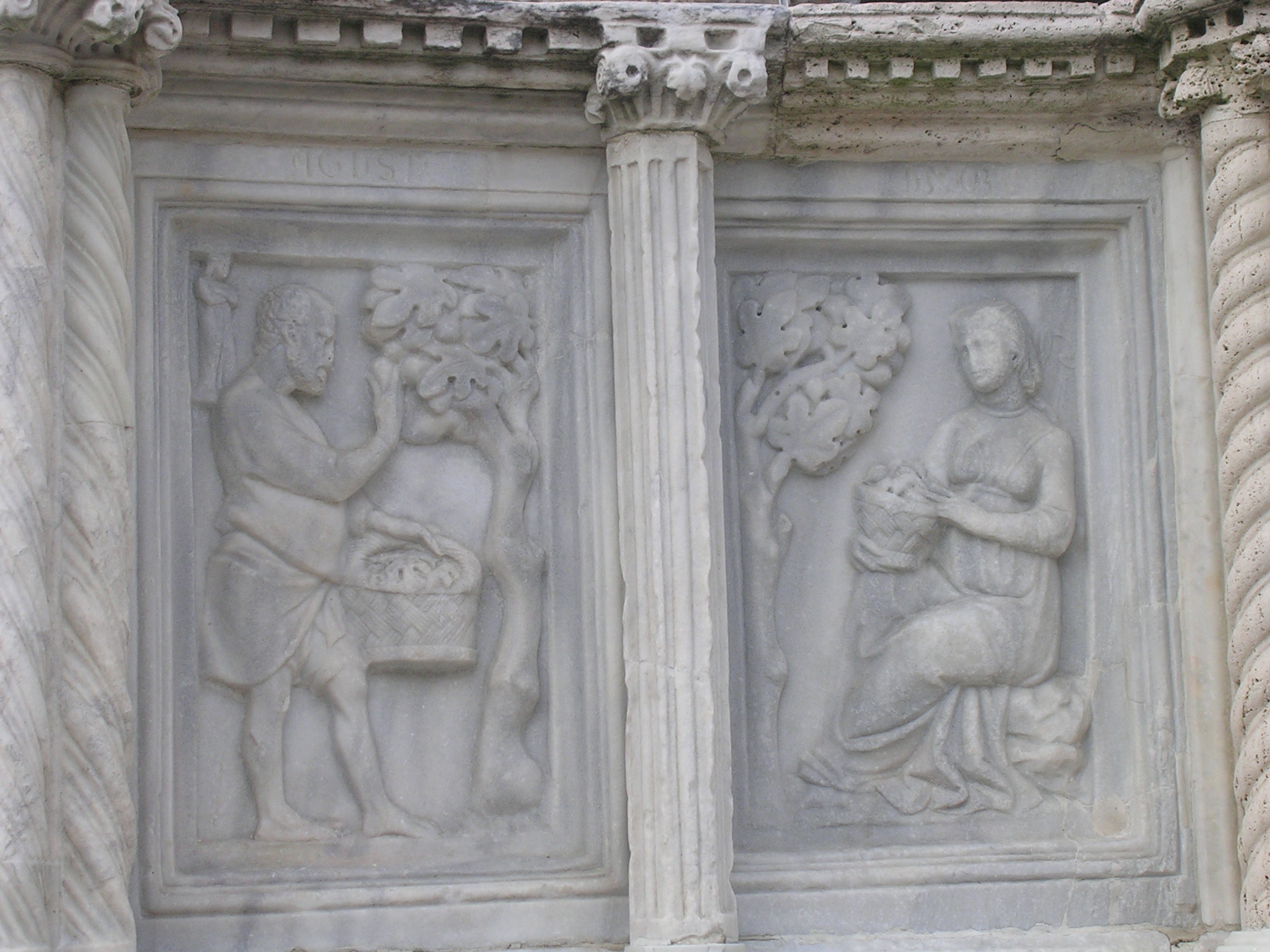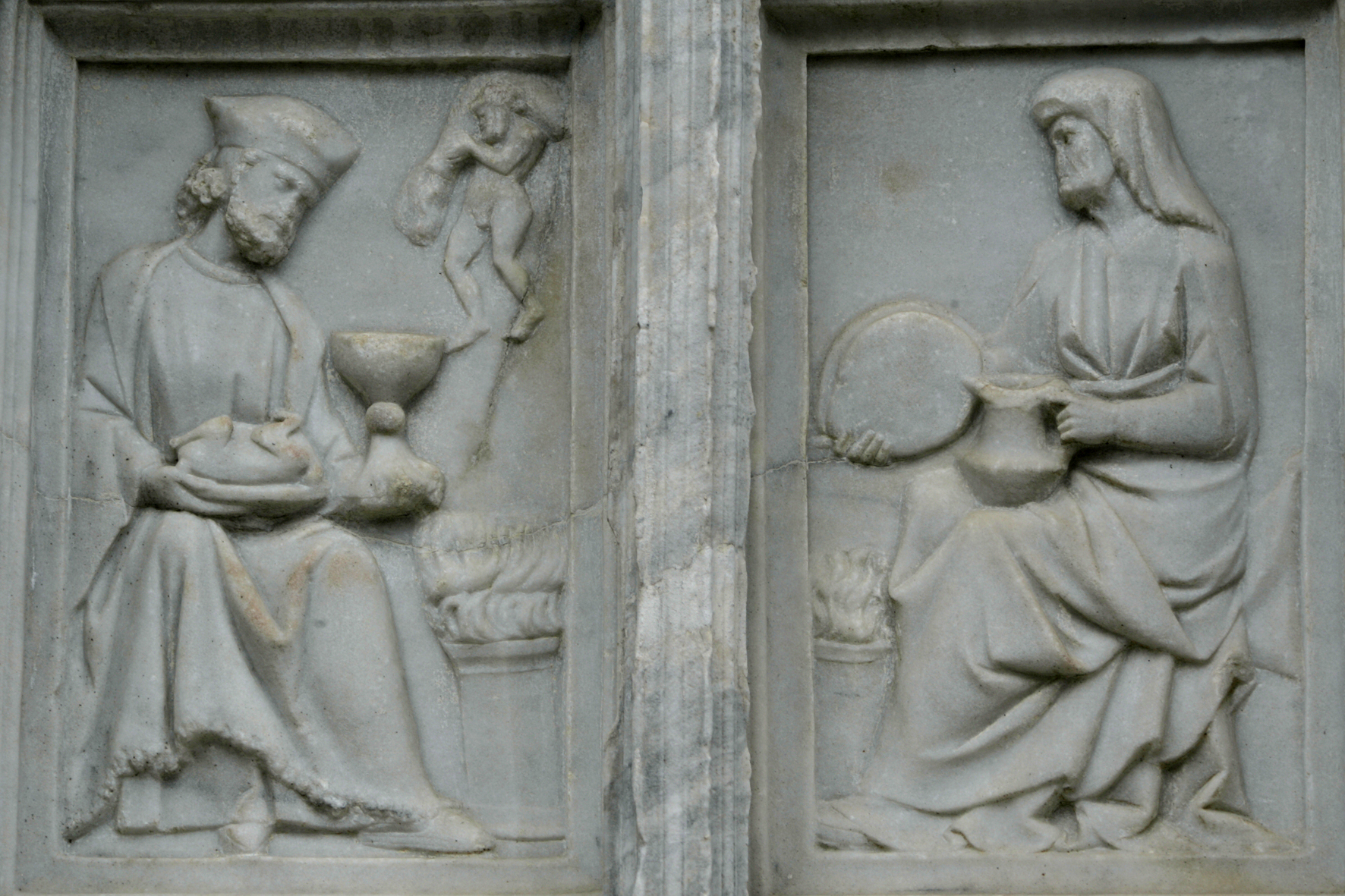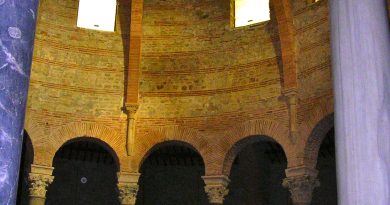Under the sign of Virgo
The medieval Woman, in her role as wife, is the protagonist of four different scenes out of the twelve months of the Main Fountain carved in 1278 by Giovanni and Nicola Pisano. There is no doubt of her identity as uxor (wife) because the Latin word is clearly written in letters above each of the four panels representing the ladies of January, April, May and August.

In the scenes of April and May, carved on the lower basin, two young women are taking on the ideal role of the bride.
We meet the following figure of wife in August, where she looks more aged, in perfect accord with the passing of time and season.
The lady of August, a flowered and matured woman, represents an exemplary woman playing a practical and productive role in the medieval society: husband and wife are gathering figs from the big tree that unites the two panels, a scene that testiefies how social and domestic duties of a medieval woman included the work in the fields.
Interesting is to note that even the respective zodiac sign of Virgo, carved in the upper left-hand corner of the right panel, symbolizes labor and productivity.
The month of January on the Main Fountain of Perugia represents the time of changeover from the old to the new year, a time well represented by the portrait of the respective figure of wife.

The two panels representing January are the first two reliefs carved by Pisano for the “cycle of the months” .
Under the zodiac sign of Aquarius, we see an old well-dressed man warming himself near a fire.
In front of the man is sitting his wife: an old lady bearing bread in one hand, and a jug of wine in the other.
These reliefs seem to underline the importance of the medieval woman in the domestic life: we know that she could play the role of administrator of her home (domus) if her husband died, and we know that she collaborated and watched over the daily home and family activities when her husband was far away or busy.
The scene of January reminds to the ancient religious Roman calendar: the male figure could easily represent the god Janus (from whom the name January derives), the god of gates (Janua in Latin), often depicted as two-faced, with one face looking back and the other one looking forwards.
A legend says that god Janus married goddess Juturna, the nymph who protected fountains, wells and springs!
Mother of Fons, the roman god of springs, Juturna is also known to have supported her brother Turno against Aeneas.
She had the power to produce water out of nothing and she was celebrated in Rome on January 11 , where water games were held in the Campo Marzio.

In the Roman square Largo di Torre Argentina are preserved remains of a temple dedicated to this deity of sponges.
There is a pool considered to have healing properties in the Roman forum, near the Temple of Vesta, that was called Lacus Juturnae and was dedicated to this nymph, married to Janus.
Antonella Bazzoli (updated in April 2017)
To read:
“Chi dice acqua dice donna” by A. Bazzoli, edited in “Medioevo”, Year 13 N. 6, June 2009




